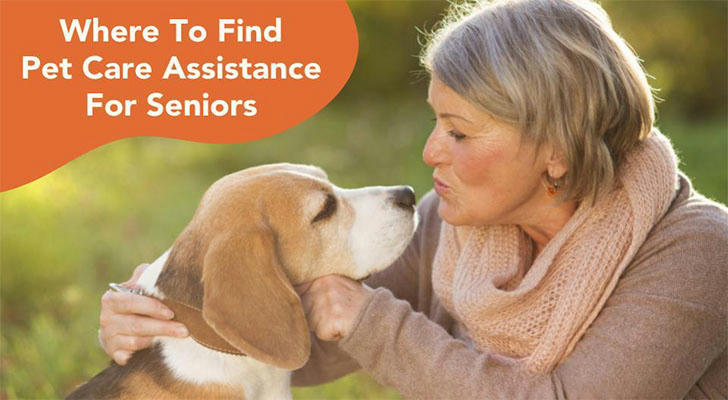Senior Pet Assistance Program 2025: How to Get Government Support at Low Cost?
As pet ownership costs continue to rise across the United States, older adults aged 45 to 65+ are seeking ways to maintain their pets’ health without placing additional strain on their budgets. This guide highlights the government-supported pet assistance programs available to seniors, providing them with affordable veterinary care and pet-related support.

1. Community and Government Pet Assistance Programs
Various government agencies and community organizations offer affordable veterinary services for seniors. These services often include vaccinations, spaying, neutering, and routine health checks—all aimed at preventing costly future health problems for pets. Additionally, many programs provide pet food assistance to help seniors manage the cost of feeding their pets.
For seniors with limited mobility, some initiatives offer mobile veterinary care and pet food distribution. These services ensure that older adults can continue caring for their pets without needing to leave their homes, making them more accessible to those facing physical limitations.
2. Addressing the Financial Strain of Pet Care
Financial limitations often prevent seniors from seeking veterinary care. Research indicates that over half of pet owners skip veterinary care due to cost, and veterinary spending in the U.S. topped $40 billion in 2024. As seniors often face the dual challenge of medical and pet care costs, affordable veterinary programs are essential to help them meet their pet’s needs without sacrificing their own health or finances.
Government and nonprofit programs are bridging this gap by providing discounted veterinary services and pet food assistance, alleviating some of the financial pressure.
3. Age‑Specific Benefits of Pet Assistance Programs
Older adults benefit from these programs in different ways depending on their age and mobility. Below is a breakdown of how programs align with senior needs:
| Age Group | Age Group Description | Benefits of Participation |
|---|---|---|
| 45–54 | Late Middle-Aged Adults | Access to wellness events for preventive care at reduced costs. |
| 55–64 | Pre-Seniors | Discounted spay/neuter services and vaccinations. |
| 65–74 | Young Seniors | Affordable veterinary checkups and pet food assistance. |
| 75–84 | Middle Seniors | Access to mobile veterinary services and home-delivered pet food. |
| 85+ | Advanced Seniors | Priority access to pet health services and additional caregiver support. |
This age-based approach ensures that seniors of all stages can benefit from tailored support to keep their pets healthy.
4. Private Veterinary Care vs. Assistance Programs
The cost difference between private veterinary care and programs offering assistance is substantial. For example:
| Service | Typical Private Cost | Assistance Program Cost |
|---|---|---|
| Spay/Neuter Surgery | $150–$300 | Available at sliding-scale rates |
| Annual Wellness Check | $100–$200 | Reduced-cost options via programs |
| Monthly Pet Food | $30–$60 | Provided through pet food assistance |
| Microchipping | $25–$50 | Often included in community events |
These reduced rates help make pet care affordable for seniors, easing the financial burden of pet ownership.
5. Why Pet Assistance Matters Beyond Finances
Pet care assistance provides more than just cost savings—it also plays a crucial role in seniors' physical and mental well-being. Studies show that seniors with pets experience increased physical activity, decreased loneliness, and enhanced emotional health. These benefits can also reduce healthcare costs over time, demonstrating that supporting pet ownership among older adults can lead to long-term savings both for the individual and society.
6. How Seniors Can Access Assistance
- Explore Available Resources: Visit your county or city animal services website or contact them to find out about available programs for seniors.
- Check Eligibility: Review the income and age requirements for each program. Many initiatives prioritize low-income seniors or those with limited mobility.
- Prepare Documentation: Have proof of age and pet health records (if available) ready to complete registration.
- Register: Sign up for wellness events, pet food assistance, or veterinary services via phone or online.
- Receive Services: Participate in scheduled care or receive mobile veterinary visits and pet food deliveries.
Conclusion
Pet assistance programs are vital for seniors, helping them maintain their pets' health without causing undue financial strain. By utilizing these services, seniors can continue to enjoy the companionship of their pets while staying financially stable. As 2025 approaches, these programs provide essential support to older adults, ensuring their pets receive the care they need while fostering overall well-being.
